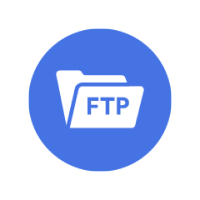The perfect employee onboarding process prepares each new hire to succeed, starting from their first day on the job. That’s why there’s such a strong correlation between a welcoming, well-considered onboarding process and employee retention.
Many businesses rush their onboarding process, cutting corners on necessary training and mentoring in favor of on-the-job training that can distract veterans on the team and leave the new person floundering.
Every position, from the front lines to the executive ranks, needs an onboarding process that introduces the new employee to their coworkers, makes certain they have all the routine tools and supplies required for the job, and determines what additional training or instruction they need.
The most successful companies know employees tend to become more efficient the longer they’re with the company. This insight guides their recruitment strategy and hiring process, culminating in an onboarding process that makes new employees feel welcome. The goal of onboarding is to make it clear to new employees that they are valued members of the team.
Streamline paperwork
Onboarding that prepares the new hire for the job needs to last more than a day, because the first day at a job often has little to do with the actual job. The employee is learning the basics and trying to remember new names and faces.
Inevitably, there’s a significant amount of paperwork. The employer must collect the new employee’s emergency contact information, tax and payroll forms need to be completed, and perhaps manuals and equipment need to be provided.
Streamlining this process is important to seamlessly onboard new employees. The information gathered is typically routine, noncontroversial, personal data such as contact information, known medical problems, emergency contacts, payroll information, and so on.
To make it easy for both the new hire and HR staff, use one of Jotform’s employee information form templates, which you can customize to meet your requirements. You can also easily organize and analyze all of your employee data in the associated table for your form. You can automatically send the collected information to Google Sheets, Airtable, or many other third-party apps using one of Jotform’s integrations.
Track where new hires are in the process
It’s simply good management to formalize the onboarding process. The degree of documentation will vary by the job and the employer. A hospital onboarding a new chief of surgery will have a more detailed and time-consuming process than a popular ice cream shop hiring for the summer.
Nonetheless, even scooping ice cream as part of a crew operating a business will require information and equipment the person cannot be expected to have when they start the job. And the employer needs to collect contact information, social security numbers, etc., from both the chief surgeon and the ice cream scooper.
The smart move for businesses of all sizes is to digitize the onboarding process as much as possible from the start. A simple dashboard will show HR, managers, and the new employee where everyone is in the onboarding process.
This type of tracking becomes even more helpful and important when onboarding involves ongoing training, such as for customer-facing technical and customer service staff. Jotform onboarding templates are designed to accommodate any onboarding process.
Creating the perfect employee onboarding process isn’t about setting up a system and letting it run. It’s a continual balancing act between collecting the necessary paperwork for basic processes like running payroll and registering the new employee for insurance, and making the new employee feel welcome, valued, and supported.
Businesses that view employees as replaceable cogs often have the highest turnover (the cost of which is generally underestimated) and ongoing morale problems. A humane, sensitive, and welcoming employee onboarding process is a low-cost way to improve company culture and team cohesion.
















































































Send Comment: